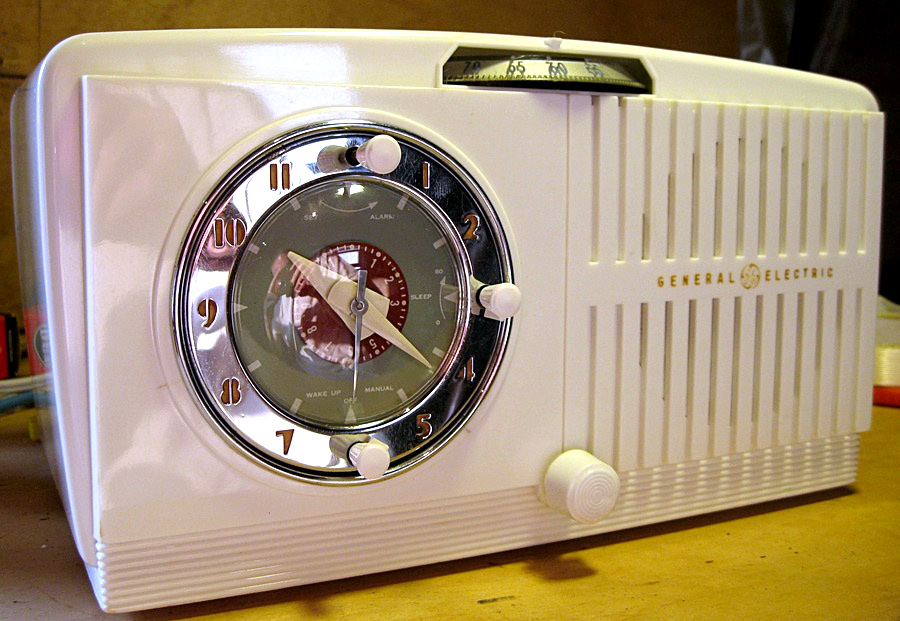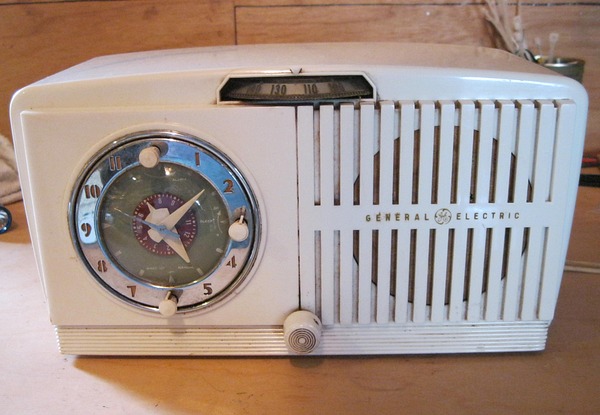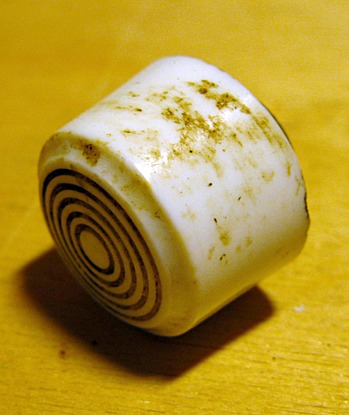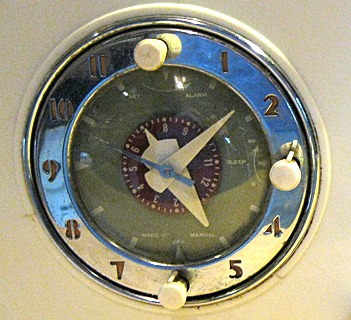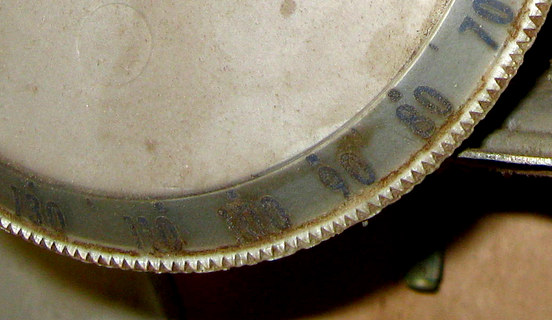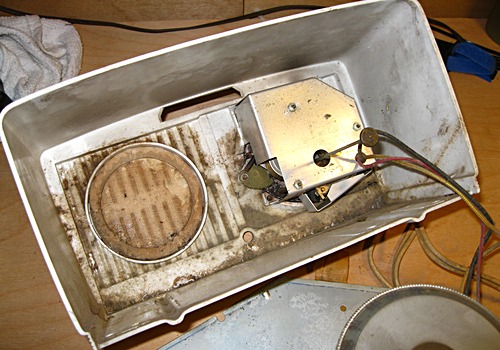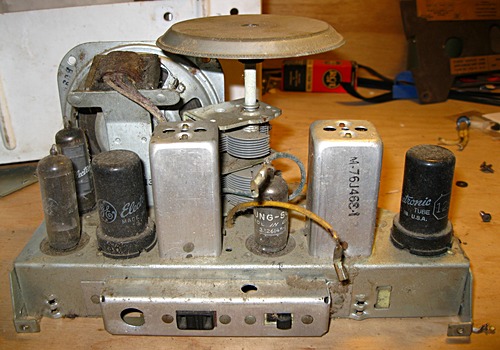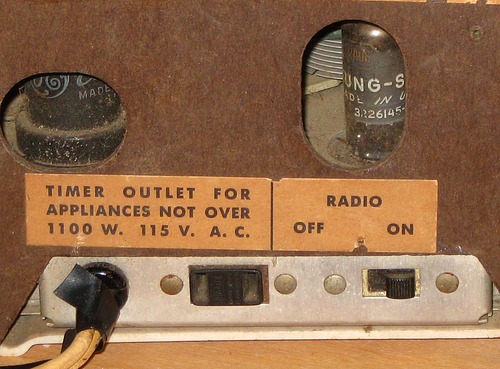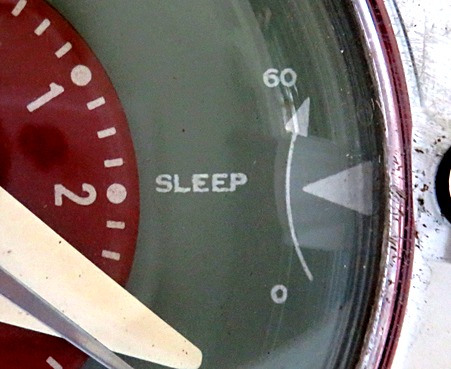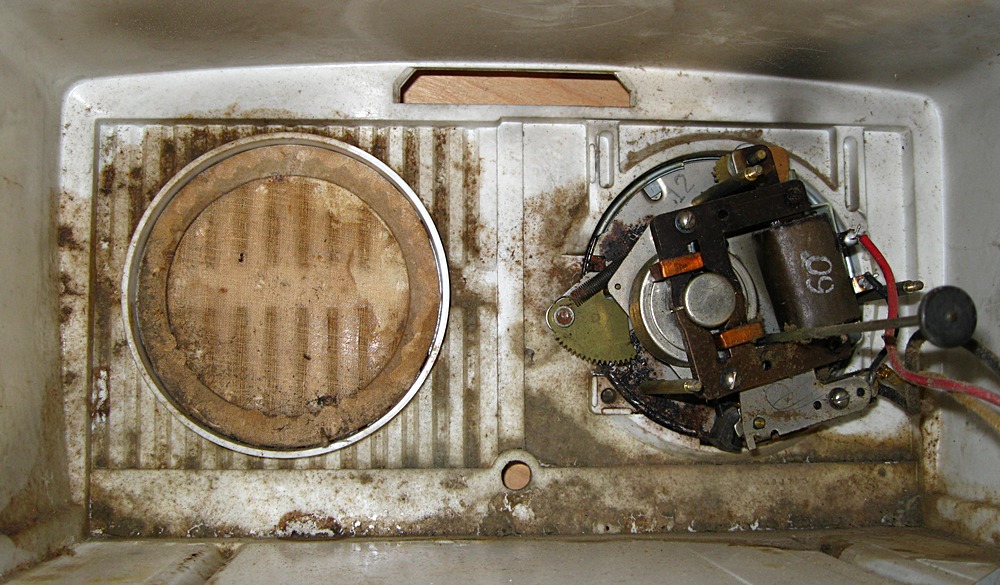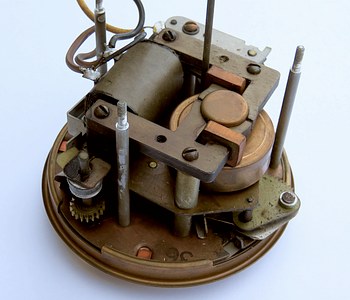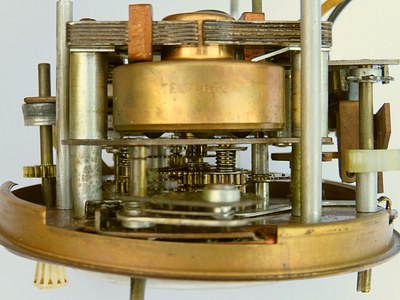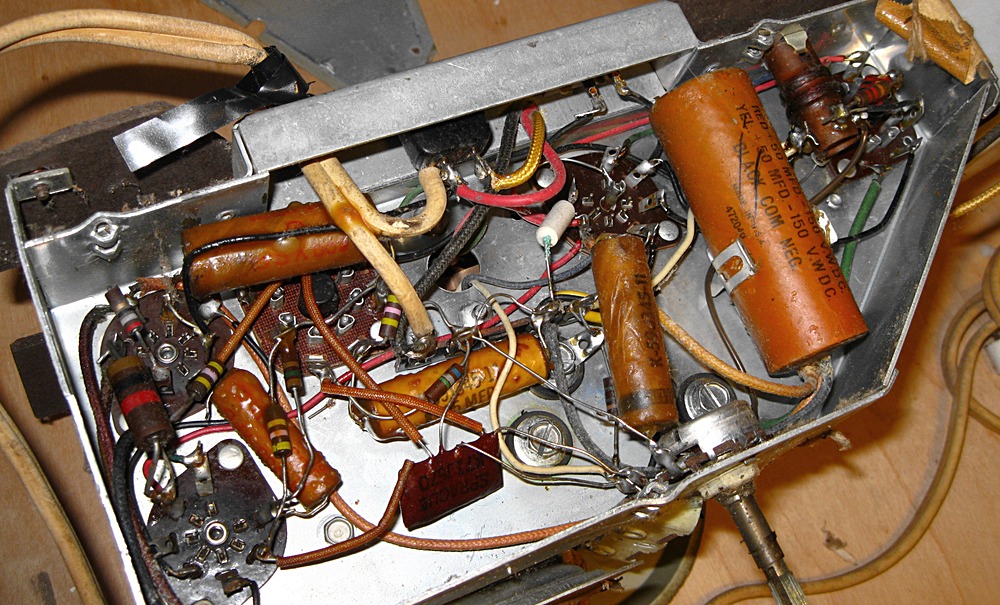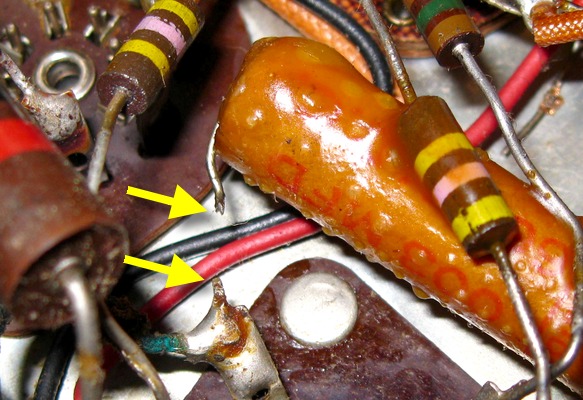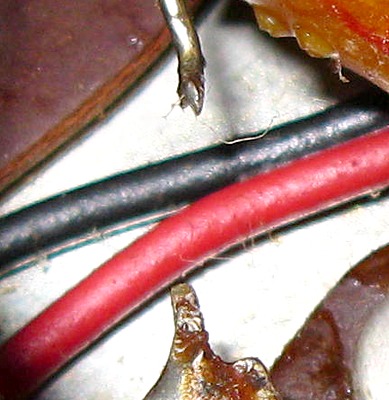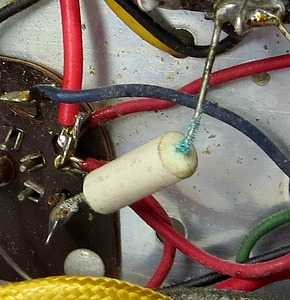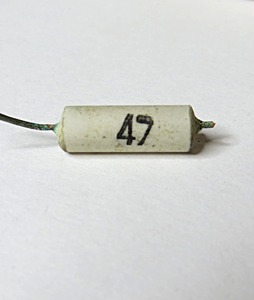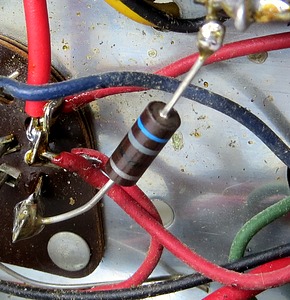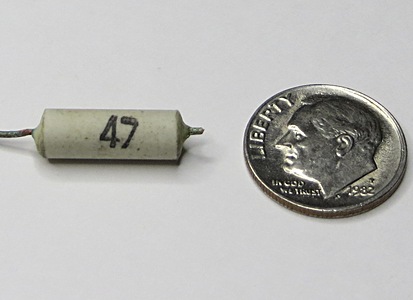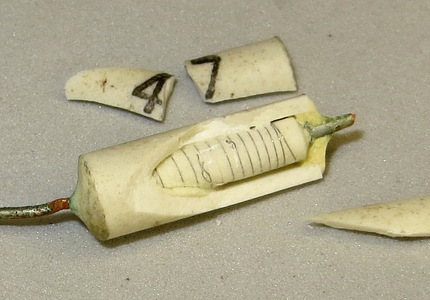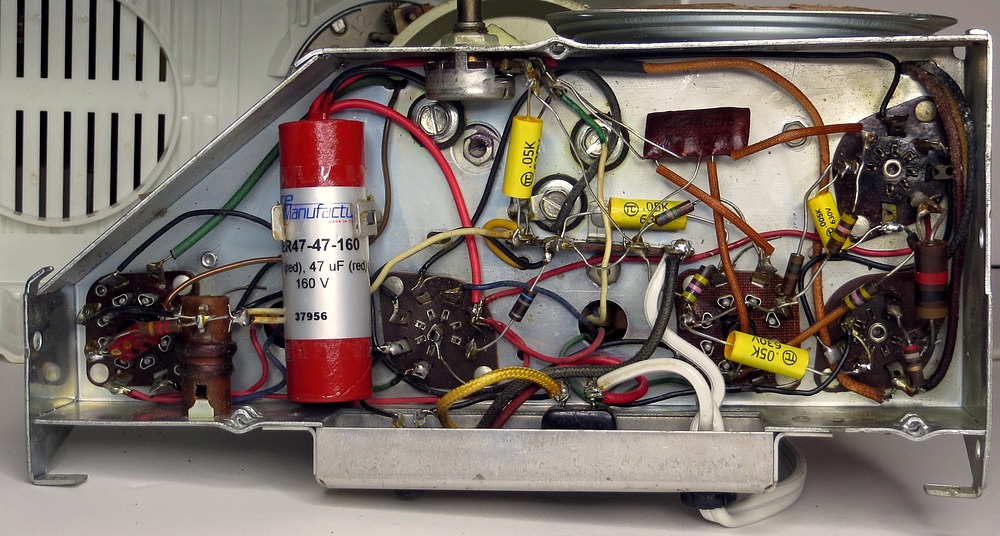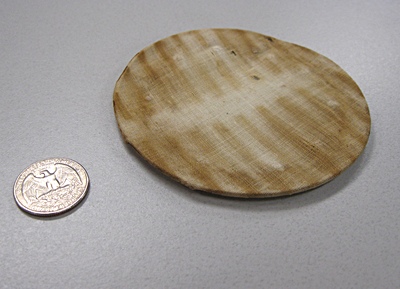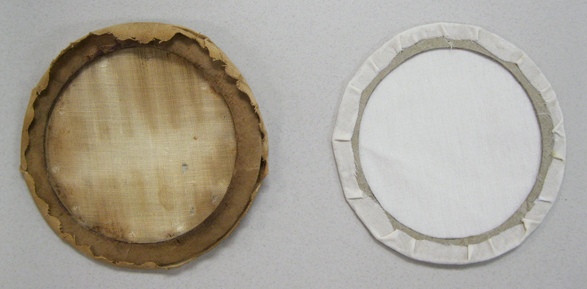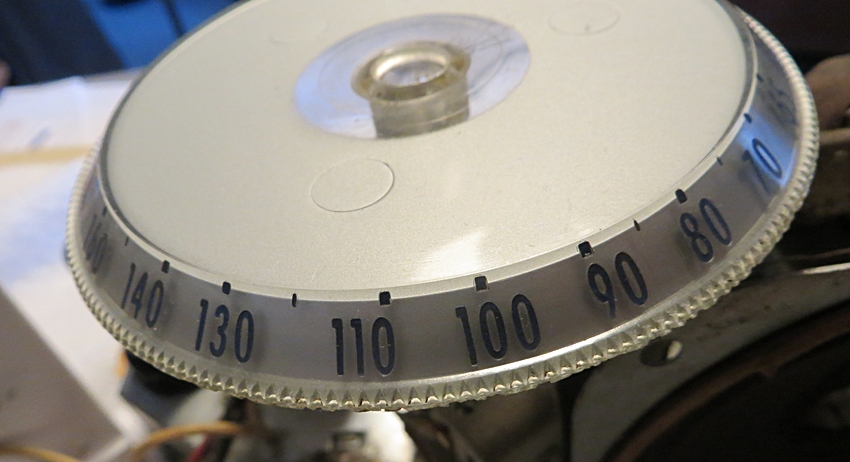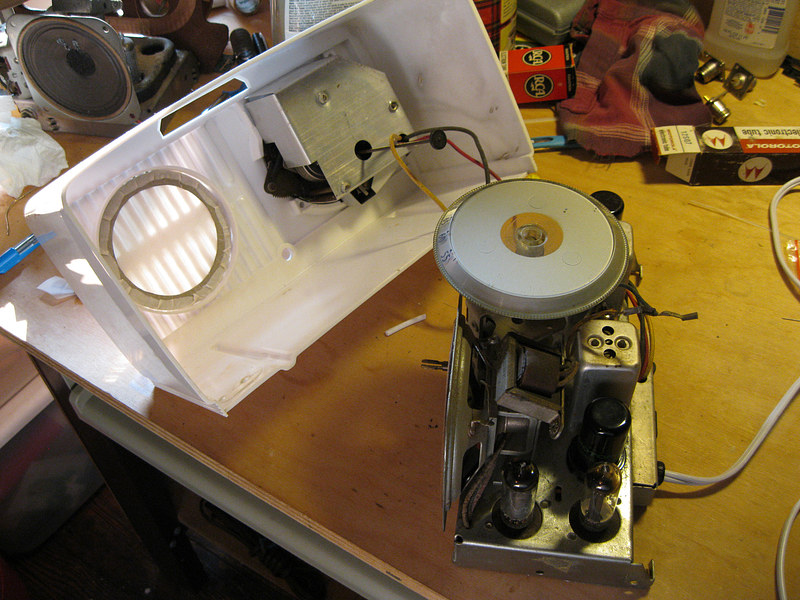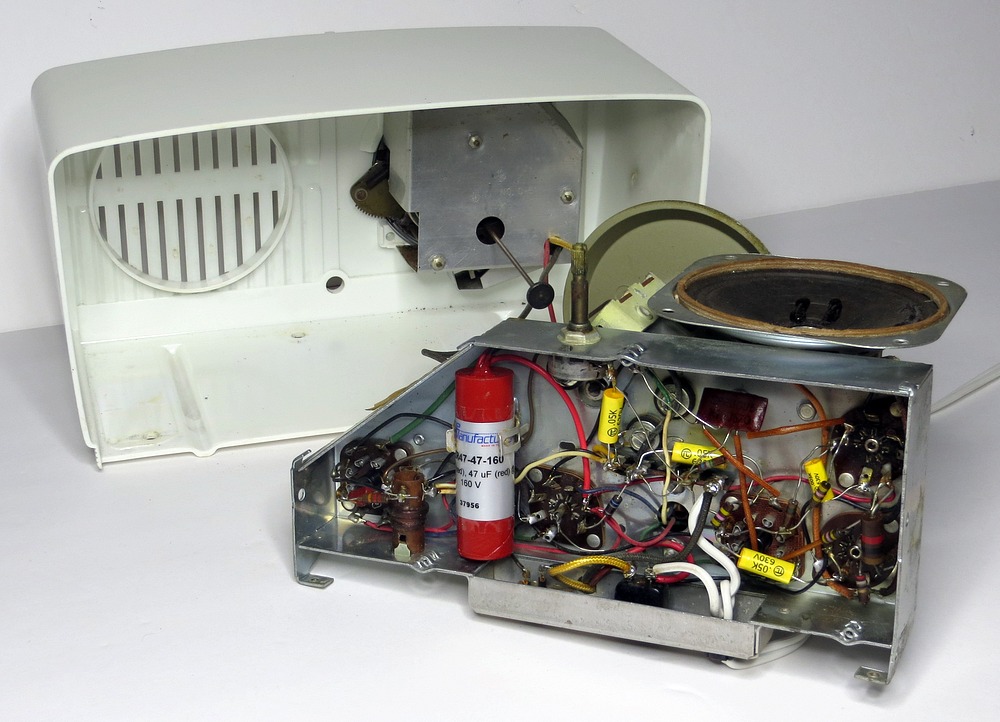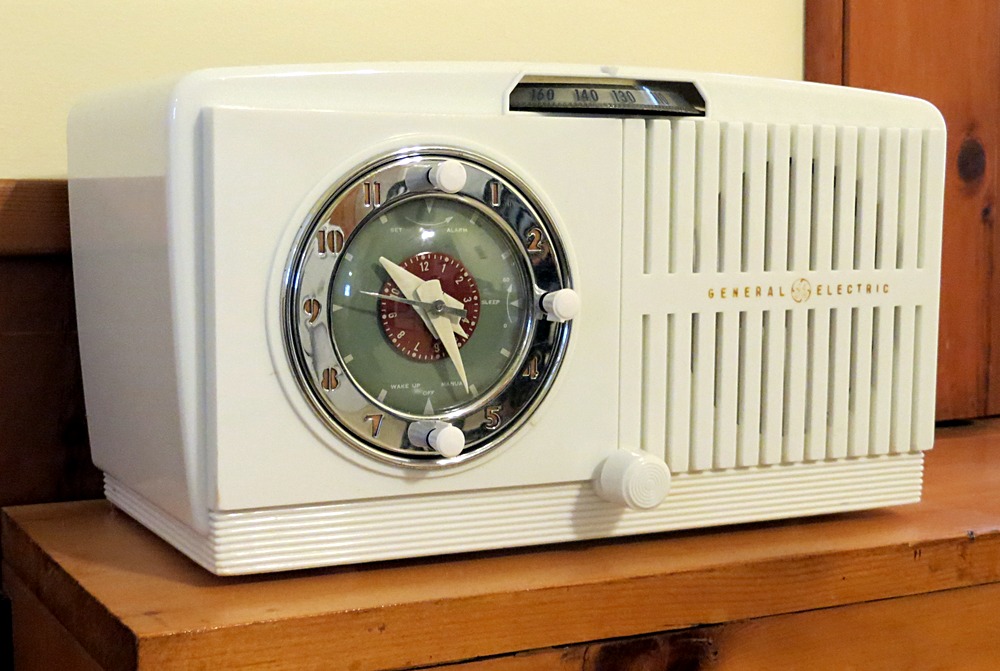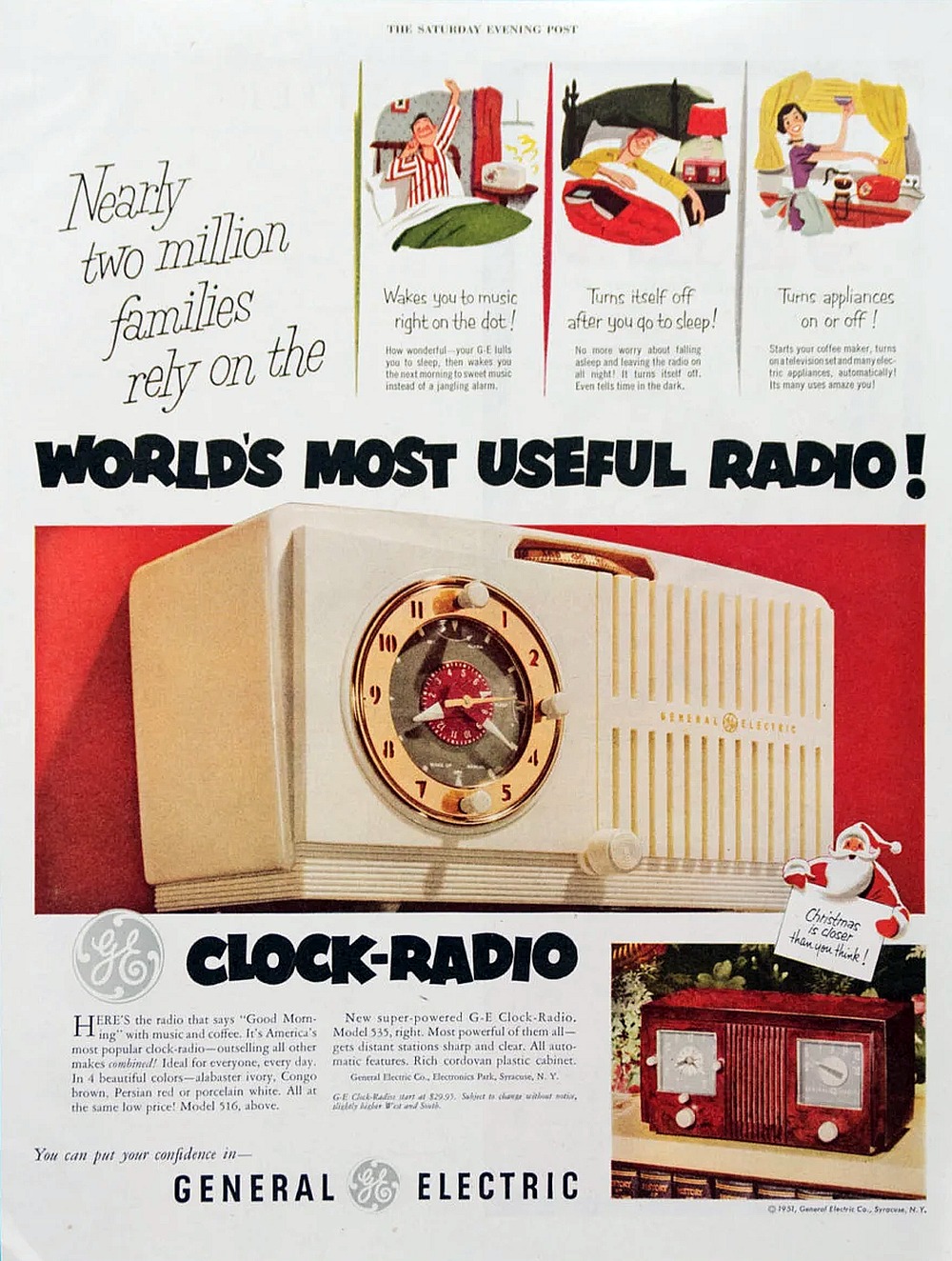 |
1950 General Electric clock radio |
 |
|
|
|
A refurbished General Electric Model 518 clock radio, manufactured in 1950. |
|
Two of these radios were bought
(cheaply) on ebay. One was to be
restored and the other was for parts, specifically the knobs on the
clock.
They are usually missing at least one knob, ergo the cheap price. |
|
|
Handling the volume control knob was especially
pleasant. I can't help but wonder who touched it last.
Gag, SPLORGH! |
|
|
|
|
I'm picking up some waves with my
psychic ability... I sense.... I sense that the radio was
unplugged at 8 minutes and 49 seconds after 5! |
|
The tuning knob had a thousand ridges
filled with gunk and germs.
Someone had once broken it off
and then epoxied it to the tuning
capacitor shaft. It would have to be cleaned while attached to the radio. |
|
|
|
|
The inside of the case was filthy. |
...as was the chassis. |
|
| |
|
|
|
|
| |
|
|
|
|
| |
There is an outlet on the back that is
controlled by the clock. |
|
The clock has a sleep function. How cool is
that? |
|
|
|
|
|
|
Where was this radio when it was in use? If it
was in my house it would take over 1000 years to look like this.
By the way, if you're working on one of these and you need
to take out the clock, it pushes out from the back. |
|
|
|
|
|
|
|
A Telechron clock from one of the
radios.
No brushes, all metal gears. A little sewing machine oil
starts them back up. |
|
|
| |
|
The underside before any work was done. A metal
plate covers this, that's why it looks so clean. |
|
| |
|
|
|
| |
| Some previous "repairman" fixed a bad capacitor
by
cutting it out of the circuit. I don't know what kind of cutter he
used. The ends are chewed up. |
|
80,000 volts might jump the air gap, but it
would probably
blow the
radio to smithereens. |
|
|
|
|
|
|
|
| I didn't know what this white thing
was. It had corrosion on it. According to the schematic,
it's a 68 Ohm resistor, but it tested at 51 Ohms. When it
was cut out it was found to be stamped "47." How did that
get in there? It was replaced with one of the correct value.
Did it make any difference?
It is R9 on the
schematic. |
|
|
|
|
|
Inside the ceramic was a wire-wound resistor.
Boy, that's an expensive way to make a resistor. |
|
|
|
|
Recapped, and with a new power cord. |
|
|
|
|
The case has been cleaned and the outside
polished,
but the grill
cloth has to go. |
|
|
The volume control knob was disinfected.
(as was the tuning knob). |
|
|
|
|
| |
|
|
|
|
| |
The grill cloth was a piece of linen over a cardboard circle. |
|
This made it easy to replicate it with some new
linen and cardboard. |
|
|
|
|
|
|
|
|
Now you can touch the tuning knob without
contracting diphtheria. |
|
|
Almost done. Everything is clean, it was
re-capped, some tubes were replaced, a tear in the
speaker cone was repaired, it has a new cord and the clock has been oiled in a dozen places. |
|
|
|
|
|
|
|
|
|
|
Here it is, at its new home in the kitchen. The
world's most useful radio! |
|
|
|
|
|
|
|
|
|
|

